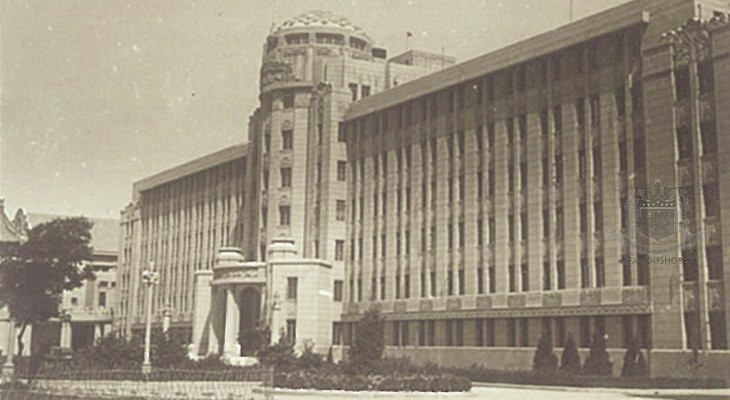

The legend continues: People's Grand Hotel in 1953 (move the slider); and today (photography by Bill Lorenz).
People’s Grand Hotel Xian
One of the finest hotels in South East Asia
In April 2014 the People's Grand Hotel Xi'an reopened after the most extensive renovation in its history. Once the first grand hotel of the modern People's Republic, it is today one of the most luxurious hotels of South East Asia.On 3 September 2014 it was officially opened in the presence of the heads of Accor China.
It continues to be the host for all dignitaries visiting the ancient Chinese capital, once the seat of the first Emperor of China. Xi'an itself is a charming city with a stunning 13.7 km city wall, temples, pagodas, gardens, marvelous museums and - of course - the fabled Terracotta Warriors, discovered only in 1974.
We recommend a minimum stay of three nights, four days.
The hotel's capacity has been reduced from 300 rooms to 72 suites and superior rooms, the smallest starting at 46sqm. A personal butler awaits you upon arrival amd is available 24 hours, a spa with a splendid indoor pool and a delicious Italian restaurant is at your service.
In our book PEOPLE'S GRAND HOTEL XI'AN we tell the story of the hotel - the book is available from our BOOKSHOP page.



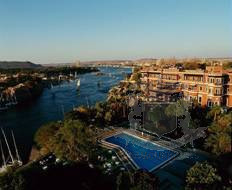
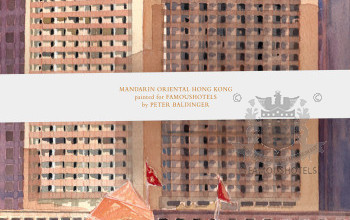
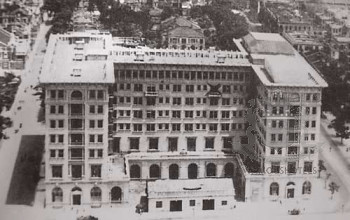
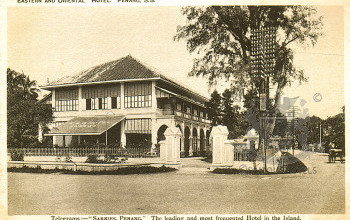

1952, preopening training;
In July 1953, the People's Grand Hotel (Renmin Dasha) and the Chinese restaurant open.
1954: the Grand Theatre (in 1954) and Grand Mercure building (in 1956) open, (Phase II project). Remaining funds and materials were used to build the east building which was finished in 1958. The building was originally scheduled to be used as staff dormitory but then used as guest accommodation because of increasing experts from Soviet Union, Eastern Europe and domestic guests during the First Five-Year Plan.
Renmin Dasha was a landmark in Xi’an in the 1950s, the second highest building after the Big Wild Goose Pagoda.
Renmin Dasha was designed by Chinese architect Hong Qing from Northwest Architectural Design Institute. The Renmin Dasha building is built so strong that it can resist a Class 8 earthquake. It is constructed by first-class Shanghai Construction crew. It is said: If it were put on wheels, one could move the whole building.
The building is rectangular at both sides and cylindrical in the middle (9 floors). It can be considered as both integrated and separate, with 5cm joint between the three parts. The building is of pouring construction and costed at that time 210 Yuan per square meter (the rear building is of frame construction and costs 120 Yuan per square meter) equivalent to per capita income at that time (for example, the meal expense of staff is 0.45 Yuan per day), which is considerable. The design of dome is inspired by the hat on Sinkiang minority’s head.
The Grand Theatre, the front building and the Chinese restaurant have three gates respectively (nine in total), which conforms to the Chinese tradition of “Imperial Throne” and demonstrates grandeur and greatness. In addition, two pavilions at the gate match with the buildings. The Chinese characters of “Renmin Dasha”, the dome of the pavilions, the Chinese restaurant and Grand Theatre and the stars on the flagpole were coated with 50 ounce gold. Unfortunately, the pavilions are removed for the purpose of road expansion around 2000.
The internal design of the Renmin Dasha building is aesthetic and scientific. The balcony at third floor is extended to coincide with the top of lobby (about 10m high) in the first floor. Thus, the space is effectively used. With glass droplight installed by Shanghai workers, the lobby is bright, spacious and magnificent. This was unique in five provinces in Northwest regions. The external wall of the building is decorated by flower pattern which gives a colorful effect.
The platform of the third floor in the front building had a flying Apsaras pattern which was destroyed during the Cultural Revolution. It is now replaced by “PEOPLE’s HOTEL XIAN”. The nameplate “Renmin Dashae was displayed on the front building in 1980s and on the top of the building in 1953. Besides the flying Apsaras pattern, Eight Immortals Crossing The Sea pattern was used but destroyed.
The seventh and eighth floors at the top of the front building were used as meeting rooms. The seventh floor can hold 100 persons and the eighth can hold thirty to forty persons. There are 24 suites (classified as A, for VIP) in six floors, four in each floor. The suites have a private bathroom. A public washroom is provided at each floor. The elevators at both ends are designed as goods elevator but fail to be installed and become the warehouse at each level. The small elevator at east of Renmin Dasha building is used for delivering hot water. The east elevator was built and used in 2001.
This hotel was considered similar to Friendship Hotels in Beijing and Luoyang to welcome foreigners. It is the only hotel which can receive foreigners in Xi’an in 1953.
Although the front building, Chinese restaurant, hall and rear building are completed separately, but they are managed by the same group. Reception of numerous guests made a great contribution to the development of Shaanxi province.
In 1950s, the entrance of hotel complex is heavily-guarded and access to the complex is restricted. A platoon of polices was stationed and the entrance guard and security guard are in due diligence.
The People’s Grand Hotel Renmin Dasha is used to receive senior officers and leaders; the rear building (Grand Mercure) attracts many experts from Soviet Union and Eastern Europe during the First Five-Year Plan and is used to receive experts, so it is called “the Experts Building”. Standard room costs 4.00 Yuan per day and Suite costs 8.00 Yuan per day at that time. As Renmin Dasha complex was governed by the government not for the purpose of profit, so the government would provide allowances. In 1981, the state issued a document on encouraging independent management and self-financing, so Renmin Dasha complex began to make profit since 1982. There was no Sales Department before Chinese Reform and Opening-up because majority of the reception was arranged by government.
The offices (including General Manager’s Office) and staff dormitory were all arranged in the basement and the Staff Canteen was arranged at the enclosure wall of Sofitel east wing.
In 1950s, Renmin Dasha was equipped with 20 cars and 4 DODGE coaches as well as Chevrolet and Buick. These vehicles were used by important officials of Kuomintang. Some vehicles were equipped with automatic transmission. Later, additional five Red Flag sedans are available, two of which are luxury car with three rows of seats. Jeeps are used to receive foreigners when the Red Flag sedans are not available.
At that time, Li Fuchun, the Vice-Premier, who came to Xi’an to investigate construction projects of the First Five-Year Plan together with officers of National Commission for Discipline Inspection are the first guest received with the highest reception standard. In 1956, diplomatic envoys of many countries came here for the inspection of Baoji-Chengdu Railway.
In 1950s, 4.00 Yuan was everyday living standard (including meals) for Russian experts.
When the Renmin Dasha complex was put in service in 1953, the number of the staff was 79, and then increased to 420 before the culture revolution. The staff worked very hard due to the special significance of the edifice, they often worked for more than ten hours and even a whole day, and especially on holidays. At that time, all of the staff took the Renmin Dasha complex as their home and were proud of their respective duties. The staffs were often sent to rail stations or other hotels for reception. Three of today’s interviewee, Wan Shoulian, Huang Shuqi and Wang Yuhua have been granted as the Founders of the Renmin Dasha complex in 1980s.
In 2003, the famous architect Zhang Jinqiu and local architects studies the repair plan. They reached an agreement that Xian Renmin Dasha was the best building in Xi’an of the 1950s.
In 2014, on 28 April, the People's Grand Hotel Xi'an was reopend after extensive renovations. The entire interior has been remodeled, the hotel has been turned into a luxurious 'Legend' by Accor, the French group, which also operates all other hotels in the Renmin Dasha complex.
Official banquet for Françoise Mitterrand
Henry Kissinger enjoyed a dumpling banquet – the favourite of many people in Northern China.
Among the many international and national dignitaries who stayed here were Queen Elizabeth II, Premier Zhou (1956), the poet Guo Moruo (he wrote the inscription of “Renmin Dasha”, inscribed on a stone, and a poem), Deng Xiaoping, Soong Ching-ling, Deng Yingchao, Penchen Dalai (1955), Chen Yi and his wife, Kim Il-sung, Kliment Voroshilov (Chairman of the USSR, one the first received foreign heads of states, in 1956), Cui Yongjian (Chairman of Supreme Commission of North Korea) and the Commander of French armed forces. In addition, cultural celebrities such as Mei Lanfang and Ma Lianliang, and Edgar Snow were also received.
Sweden’s King Carl XVI Gustaf, Germany’s president Karl Carstens or Francois Mitterand of France, to name but a few, were guests of the Renim Dasha.
++++++++++++++
1956: Qian Xuesen (1911 – 2009), the father of the Chinese missile program me, had also secretly stayed here after spending 5 years under virtual house arrest in the USA. In October 1955 Qian was released and rumoured to have been swapped for 11 U.S. airmen held captive by China since the end of the Korean War.
His presence in Xi’an was a secret affair, and so for example the waiters could not use his name and would only call him by the room number.
+++++++++++++
♥ In 1978, former French Prime Minister Jacques Chirac said: ‘With the discovery of the terracotta figures, we can say that we have Eight Wonders of the Ancient World. Who has not seen the Terracotta figures can not be considered to have been to China.’
+++++++++++++
♥ When the former president of France, Valéry Giscard D’Estaing, visited the hotel, he surprised general manager Michelle Molliet with his detailed archaeological knowledge about the Terracotta Army and its historical background.
Setting the stage:
♥ At the beginning of the 1950s, Xi’an was chosen by the Chinese government from all major cities of the five north-western major Chinese provinces to build a modern and representable hotel to accommodate foreign guests. The place was originally named North-West Peoples’ Square before it was called Renmin Square.
♥ When the Renmin Dasha, was built, it was almost the tallest building of Xi’an, second only to the Big Wild Goose Pagoda.
♥ When the Renmin Dasha complex was put in service in 1953, the number of the staff was 79, and then increased to 420 before the culture revolution. The staff worked very hard due to the special significance of the edifice, they often worked for more than ten hours and even a whole day, and especially on holidays. At that time, all of the staff took the Renmin Dasha complex as their home and were proud of their respective duties. The staffs were often sent to rail stations or other hotels to wait at receptions.
♥ In 1953, Renim Dasha was the biggest hotel in Northwest China. In 1954, the Grand Theatre opened. In 1956, today's Grand Mercure building opened (Phase II project). Remaining funds and materials were used to build the east building which was finished in 1958. The building was originally planned to be used as staff dormitory but the increasing demand from experts from the Soviet Union, Eastern Europe and domestic guests during the First Five-Year Plan turned it
The dome of the main building
♥ The dome on top of this central tower was modelled after a hat of the Daur people, a minority in China and Mongolia.
♥ The whole complex of buildings spread over an area of over 66,000m2. After its completion the entire Renmin Dasha complex comprised various buildings, the ‘People's Grand Hotel’ in its centre sported two symmetrical rectangular blocks and one 9-floors-cylinder in its centre.
♥♥♥ All complexes together - separated by spacious courtyards with classical structures - offered 600 rooms with over 1,200 beds and 23 restaurants and a theatre with 1409 seats!
Renmin Dasha: The hotel was called Renmin Dasha. The word ♥ Dasha has Russian and Greek roots and it always means 'gift of god'. The Renmin Dasha was not just one hotel. When it opened, people entered a complex of buildings. First they were met by the domineering façade of what is today the People's Grand Legend Hotel, guarded by two charming Chinese pagoda style towers, which were only the beginning of more buildings, leading deeper into the premises.
The Grand Theatre hosts shows, operas, congresses. A 1,409 seats theatre on one side, a restaurant and entertainment complex on the other. All this followed a rigorous geometric symmetry, built around a central axis, which ranged from the centre of the front porch to the rear side of the entire complex. From this axis a 45 degree road network set out to explore the premises, two round fountains welcome you at the gate. A touch of classicist architecture reflected the French educational background of the Chinese mastermind behind it.
♥ With its generous balcony over the drive way, a bright and spacious lobby, a Grand Theatre and a collection of 10 restaurants on the premises, the Renmin Dasha became a role model of modern hotel architecture. However, Rooms in Bldg No I were very small and did not have bathrooms attached. Only shared bathrooms were available for all the standard rooms, so they constantly refurbished and enlarged the rooms by tearing down walls to combine two rooms into one.
---> see the layout of the entire complex.
♥ It was the first ‘Grand Hotel of Modern China’. Its shining Chinese characters of ‘Renmin Dasha’, the dome of the pavilions, the top of the Chinese restaurant, the words ‘Grand Theatre’ and the stars on the flagpole were all coated with 50 ounce (1.4 kg) gold.
♥♥♥ Guo Moro, (1892–1978, Chinese historian, poet and the president of University of Science and Technology of China) wrote a poem – about Renmin Dasha.
The Renmin Dasha – being the only luxurious hotel complex in the region – became the haunt for every discerning traveller and certainly for each and all official visitors of the city, from the chairman of the party to Kings and presidents.
Hotel's main entrance and hotel car ♥♥ Equipped with 20 hotel cars, among them 4 Dodge coaches as well as a Chevrolet, Jeeps, a Buick and five Red Flag sedans with three rows of seats, the hotel welcomed heads of states, royalty and leading personalities from all over the world. ++++++++++++ In 1950s, the entrance of hotel complex was heavily-guarded and access to the complex was restricted. A platoon of polices was stationed there. ++++++++++++
Before 1974, visitors came to see Xi’an itself, the ancient capital of China, with its magnificent city wall and its small and large Wild Goose Pagodas, the Bell Tower, the Drum Tower, its museums (among them the oldest museum in the world, the ‘Forest of Stones’) and its almost untouched treasures and – yes – enjoy a show at The People’s Grand Theatre, adjacent to the hotel. ♥ The Terracotta Soldiers were dicovered in 1974.
Now everybody came to see them, the new and unexpectedly unearthed eight of all ancient wonders of the world. Together with the pyramids, it was the only one that still existed. In 1978 former French Prime Minister Jacques Chirac said: ‘With the discovery of the terracotta figures, we can say that we have Eight Wonders of the Ancient World. Who has not seen the Terracotta figures can not be considered to have been to China.’
+++++++++++++
Francois Mitterand toasts to his hosts
The oldest tree in the gardens: 1200 years!
♥ The gardens of the People's Grand Hotel are home to over 10,000 plants representing over 70 different species. The most prominent and valuable of them is certainly the Crape Myrtle tree in next to the pavilion in the gardens. It is marked with a plate, which says that it is an estimated 1,200 years old. In front of the Grand Mercure stands a row of olive trees. Their seeds were brought back to China by Premier Zhou Enlai from a state visit to Albania.
1953-architect-Hong-Qing
♥ The architect of the hotel, Hong Qing (1913–1979), was so famous, that he was among the 30 leading Chinese architects who were invited to participate in the construction of the Memorial Hall of Chairman Mao.
The overall layout of the Renmin Dasha compound was sometimes compared with the Chinese character ‘?’ (mountain).
♥ The layout of the entire compound sticks to a rigorous symmetry, with a central axis, 45 degree road network, round fountain and S shape corridors, all leaning towards an European classical baroque style. It was designed as a combination of classicism architecture of France and China. Main features of the hotel’s layout (keywords): - Chinese classical courtyard, Central axis & Central emphasis - Strict geometrical relationship - Perfect fusion of an ancient Chinese traditional courtyard and European classical garden - Octagonal pavilion roof - Golden cut - Decorative Style - Concise modernist style - Gothic Revival secession - Elements from various historical periods, simplified. - Gardens within its walls and surrounding with some 10,000 plants
♥♥ The construction of the Renmin Dasha is so strong that it can resist a Class 8 earthquake. It is said that if it were put on wheels the whole building could be moved in one piece.
Golden Memories
Staff and operation:
At the early stage of the Renmin Dasha complex, only attendants of the restaurant and guest rooms were dressed in working suits, all of which were white shirts of traditional fashion and with Chinese collars and trousers. The working suits were later developed into white jackets for male and female and skirts for female. [caption id="attachment_72" align="alignnone" width="660"]
Staff in the 1980s
♥♥ Originally, all waiters in the restaurants had to wear hats and masks, which was not acceptable for foreign guests who considered the masks interrupted their smooth communication with the waiters, and then the mask system was abolished. (transcript from a personal interview).
When the Renmin Dasha complex was put in service in 1953, the number of the staff was 79, and then increased to 420 before the culture revolution. All staff worked very hard due to the special significance of the edifice, they often worked for more than ten hours and even a whole day, and especially on holidays. At that time, all of the staff took the Renmin Dasha complex as their home and were proud of their respective duties. The staffs were often sent to rail stations or other hotels to wait at receptions. (transcript from a personal interview).
Staff would not be allowed to use the guests’ elevators.
The wages of staffs in 1950s and 1960s are specified as follows: more than 40 Yuan for high level of administrative officers, daily meals (including breakfast, lunch and dinner) of 0.45 Yuan for staff, and the breakfast was soy milk and youtiao, the lunch was four entrées and a soup, and the three meals were considered as quite sumptuous. (transcript from a personal interview).
♥♥♥ 'People were so proud of being working for the RD complex. It was a great honour to have been selected. It was nearly a secret mission, as you were working for the government.' (transcript from a personal interview).
4 waitresses / Chinese restaurant
In 1980s, the fashion of working suits of the service industry was obviously changed due to the landing of foreign and Hong Kong investment, and the record of Cheongsams as female attendants’ working suits was made.
Perfect cooking skills
♥♥ Good cooks were offered premier citizenship of Xi’an. Renmin Dasha had always enough food supply even in times of food rationing. They were able to choose first the best quality before the rest. Before 1985 the food was only supplied by food ration cards. But not only food, everything even a haircut. It was the closed policy of centrally planned economy. Only after 1985 the opening started. (transcript from a personal interview).
A golden cloche discovered during researching the book.
The western-style food of the Renmin Dasha complex was very authentic and delicious, even French guests who tasted the food gave a highly praise and felt as they came back to France. Some of cooks of western-style food have served in foreign embassies and learned great cooking skills. In addition, the Chinese food was also highly praised, especial for the specialty of Calabash Chicken. It is said that Kim Il-sung, the leadership of Korea, loves the “camel feet soup” cooked by the cooks of the Renmin Dasha complex, and later specially sent persons to learn its cooking skill.
Zhen Shenghe, the former cook here, is very famous and was later appointed as a CPPCC member. (transcript from a personal interview).
These three dishes were the most famous ones in the western restaurant: ????? Hashed chicken with sea-cucumber and squid = Ji Mi Hai Liang Yang. ??? Deep fried chicken Hu Lu Ji ??? Camel feet soup Tuo Ti Geng +++++++++++++ Bin Yuan Gong, ??? - was the name of the Chinese restaurant since 1991. Located at the first floor of conference and exhibition center. +++++++++++++ In 2004, Accor took over the complex and named Renmin Dasha Building #2 Grand Mercure. The Chinese translation, Hao Hua Mei Ju, means the hotel would provide the guest a pretty comfortable rooms and fantastic experiences. By that time the Renmin Square Hotels were: - Sofitel Xi'an on Renmin Square - Grand Mercure Xi'an on Renmin Square - Mercure Xian on Renmin Square - People's Grand Hotel Xi'a.
1955 Liu Weishi Manager
1964 Wu Shouqing Manager
1971 Du Xiucheng Director
1973 Zhang Zhenbang Director
1977 Zhang Rufeng Manager
1980 Zhao Huiqin Manager
1983 Man Hengguang General Manager
1985 Xue Hanjun General Manager
1997 Wang An Quan General Manager
1997 Xi Da Li General Manager
2004-2006 Michel Molliet General Manager
2006-2011 Peter Erler General Manager
2011- Stephen Antram General Manager
2012- William Yuen Hotel Manager Sofitel Xi’an Hotel
2013-2014 Pierre Henrichs Manager People’s Grand Hotel
72 Rooms